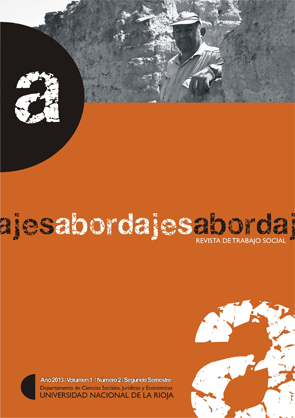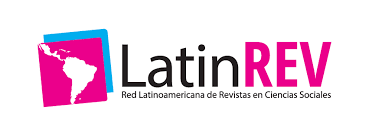LA IMAGEN EN LA HISTORIA. Aportes desde una perspectiva posfundacional.
Palabras clave:
Imagen, Posfundacionalismo, Historia, Anacronismo, SíntomaResumen
En este trabajo proponemos analizar los posibles usos de la imagen para la construcción del relato histórico. A partir de los aportes epistemológicos de Didi-Huberman y Rancière se buscará indagar en una concepción de la imagen que sealeje, a la vez del paradigma positivista (la imagen como representación especular de lo real), como de las corrientes posmodernas antifundacionalistas (la imagen como totalidad que anula lo real). De ese modo se buscará presentar cómo losaportes de estos autores contribuyen a construir el relato histórico, ya no usando la imagen como una ilustración que supondría un sustento probatorio a una argumentación sino como una fuente que no habla por sí misma, que se encuentraprofundamente sobredeterminada por la retórica exegética de su tiempo. Es de esa manera que las imágenes tienen una potencia particular que nos excede, tanto espacial como temporalmente, pero que a la vez no puede existir sinnosotros. En ese sentido nos parece que urgen las siguientes preguntas: ¿cuáles son los límites de la imagen en sí misma para dar cuenta de sus interpretaciones?¿Es posible construir un relato histórico a partir de la imagen? Estas dos preguntas convergen en una última: ¿es posible concebir una historia producida como imagen?AbstractThe purpose of this paper is to analyse the possible uses of the image for the construction of historical account. Working from epistemological contributions of Didi-Huberman and Rancière, we will look into a conception of the image that distances itself both from the positivist paradigm (the image as a specularrepresentation) and also from the postmodern currents (the image as a whole that overrides reality). We will explore how the authors’ contributions help to understand the construction of historical account not by using the image as an illustration thatprovides supporting evidence to an argument, but instead as a source that does not speak for itself, that is profoundly overdetermined by the exegetical rhetoric of its own time. In this respect images have a particular power that exceeds us but yet cannot exist without us. Consequently, the following questions come up: what are the limits of the image itself to account for its various interpretations? Is it possible to construct a historical account from the image? These two questions converge in a third one: Is it possible to conceive a history produced as an image?Key words: Image; Post-foundationalism; History; Anachronism; SymptomDescargas
Los datos de descargas todavía no están disponibles.
Descargas
Publicado
2016-08-17
Cómo citar
Reydó, L. (2016). LA IMAGEN EN LA HISTORIA. Aportes desde una perspectiva posfundacional. Abordajes. Revista De Ciencias Sociales Y Humanas, 1(2). Recuperado a partir de https://revistaelectronica.unlar.edu.ar/index.php/abordajes/article/view/228
Número
Sección
Ensayos






